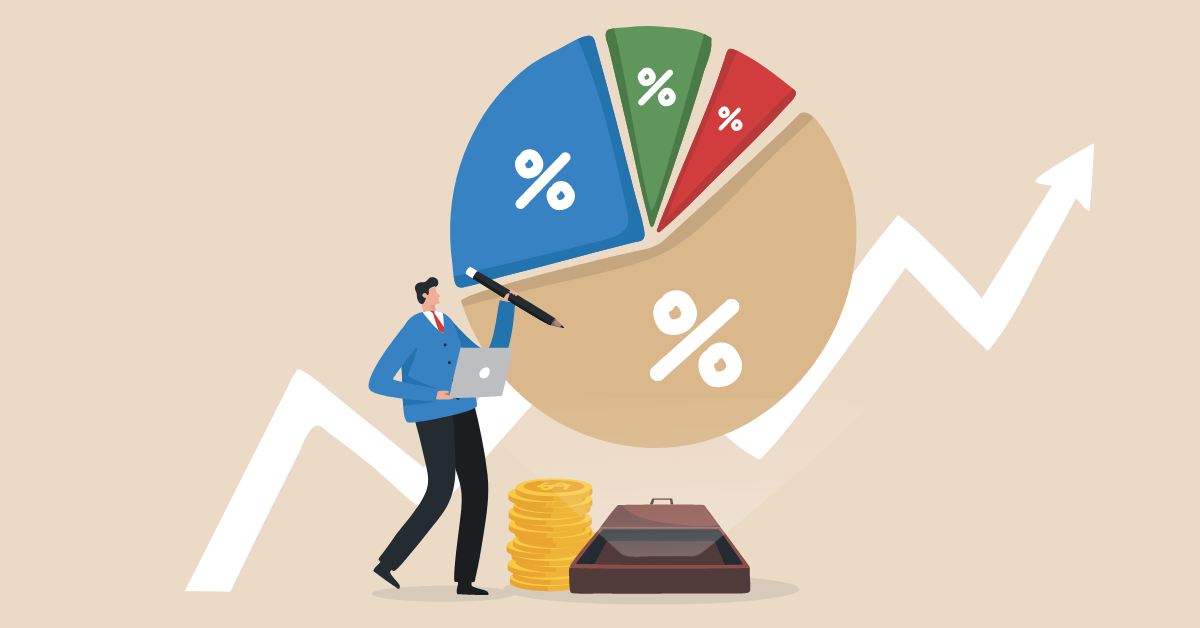“A Portfolio is like a bar of soap – the more you handle it, the smaller it gets.” – Wall Street Adage.
While many new investors have joined the stock market community by investing for the first time in equity shares post-pandemic, considering the faster economic recovery, there is also a large number of investors who are re-evaluating their existing portfolios.
An ideal investment portfolio will have a variety of securities, just like a spices box in your kitchen. But, the success of your portfolio generating the desired returns would largely depend on your portfolio investment process, asset allocation, portfolio creation, etc.
This blog focuses on providing you with the 3 most useful tips to build an ideal investment portfolio for yourself.
Diversify Your Stock Market Portfolio
The key to building an ideal investment portfolio is to diversify as much as possible. Your stock market portfolio should not only consist of stocks and mutual funds, but it should also add flavors of gold, Exchange Traded Funds (ETFs), bonds, etc.
To build the best portfolio for long-term investment, you must use a diversification strategy to optimize the returns and minimize the risks. Many portfolio stocks in India are highly volatile in terms of price fluctuation. To protect your stock investment portfolio from such massive changes, you should cover your portfolio with various securities.
How Many Stocks Should be in a Portfolio?
Some experts have analyzed that having 20 to 30 stocks in your portfolio could optimize your returns. However, exposure to only equity would not work as an ideal investment strategy.
Similarly, over-diversification could lose you money since they don’t dilute the risks involved as effectively as a moderately diversified portfolio would do.
Understand the Portfolio Investment Process
Understanding your portfolio investment process will help you develop your investment portfolio asset allocation. The portfolio investment process consists of the following simple steps:
- Assess your risk appetite, target investment period, and your investment goals.
- Create an asset allocation plan that will match your financial goals.
- Diversify your portfolio by investing in varieties of securities.
- Re-evaluate your portfolio and rebalance if required.
How to Perform Portfolio Creation for Investment?
The portfolio creation for investment is as simple as picking a few securities and investing in them, but with a proper asset allocation plan. When you assess your investment goals and risk appetite, you should build an asset allocation plan for your portfolio.
Once your asset allocation plan is handy, you can create your portfolio by adding desired securities with an eye on long-term wealth creation.
How Much Should be the Rebalance Portfolio Frequency?
An ideal rebalancing frequency could be once a year, and however, you may rebalance anytime when your equity portion exceeds anything that you have decided as a threshold (for ex.: an investor may choose to keep 60% of investments in equity), based on your own risk appetite. There is no precise rule to the frequency of rebalancing your portfolio since it is a personal choice for you to perform rebalancing monthly, quarterly, semi-annually, or yearly.
However, rebalancing too frequently will cost you time and energy, making you panic with every small change in your portfolio.
Focus on the Asset Allocation and Portfolio Construction
Focusing on asset allocation and portfolio construction will fetch you better long-term returns in your portfolio. Asset allocation refers to deciding an asset mix and allocating your investments as per the set asset mix.
For example, if your desired asset mix is 3:3:4 for equity, debt, and gold investments, you should allocate 30% of your investments to equity investing, 30% to debt, and the remaining 40% to gold.
When you are ready with an asset allocation plan, it will automatically help you with portfolio construction. Asset allocation leads you to build an ideal investment portfolio because you assess various aspects of your investment goals and then decide on an asset allocation.
Why Investing with an Asset Allocation Plan Helps?
Asset allocation helps you diversify your portfolio with a pre-determined target. Without an asset allocation in mind, if you diversify your portfolio, you may invest more in debt and less in equity and end up with lower returns basis your risk profile. Understanding asset allocation helps you in performing an investment portfolio analysis, to tell you whether your portfolio is well-diversified or not.
To build one of the best investment portfolios, you need to have an asset allocation in place. It can save you from massive shocks due to market fluctuations since you already have an asset allocation plan in place.
It will also help you optimize your portfolio returns because an asset allocation pre-determines an asset mix for you to invest your money in different proportions across various securities.
Concluding Thoughts
An ideal investment portfolio that works for you may not work for everyone. It purely depends on every investor’s personal choices, investment goals, risk-taking abilities, a period during which they want to stay invested, and their asset allocation plan.
Discover stocks that suit certain filter criteria and dive into details to check their WealthBaskets.
Keeping the above tips in mind while finding your ideal investment portfolio will save you time researching and understanding various strategies. Alternatively, you can invest in the portfolios readily available to you, curated by the SEBI-approved investment analysts, at WealthDesk. These professionals have created WealthBaskets that consist of stocks or ETFs reflecting an investment strategy or theme.
FAQs
Your ideal investment portfolio generally consists of varieties of securities with the proper asset allocation in place. It may include stocks, bonds, gold, ETFs, mutual funds, etc.
As a beginner, you must follow a buy-and-hold strategy. Once you build your expertise in investments, you may start trading stocks.
Equity is a highly risky investment, and if your portfolio mix for equity goes beyond 70%, it is generally considered a risky portfolio.


















